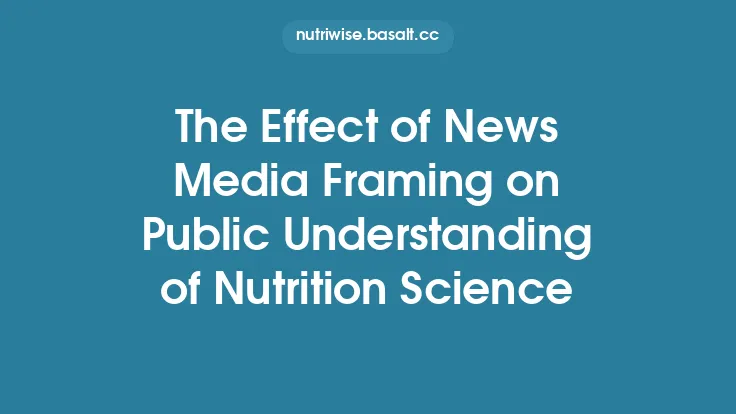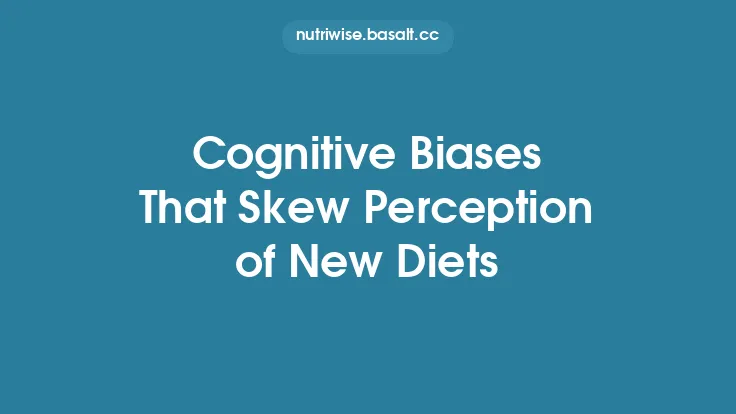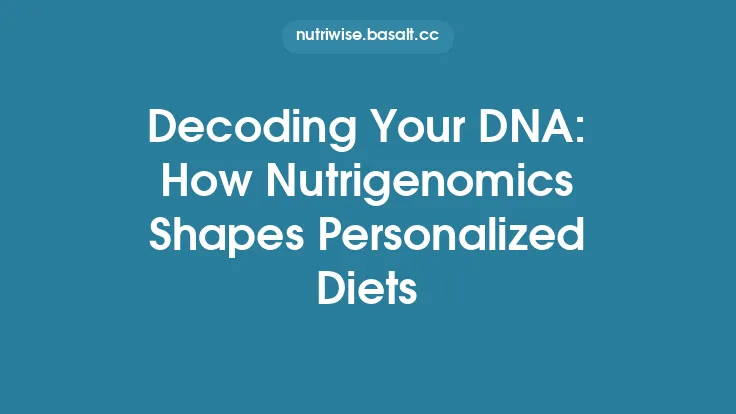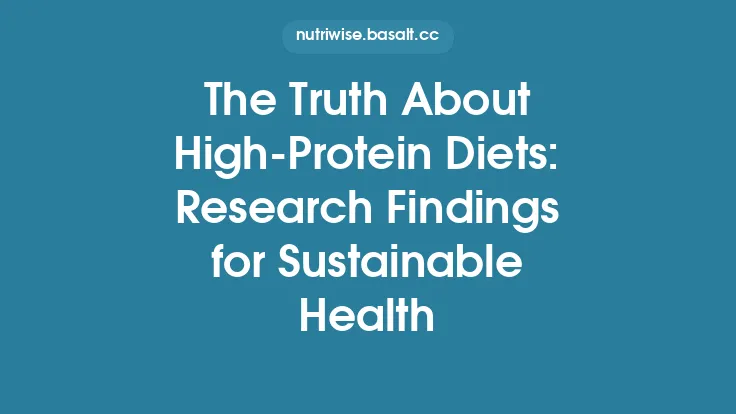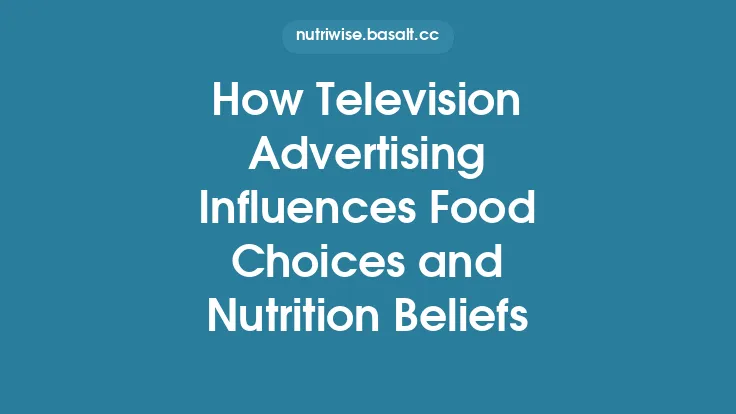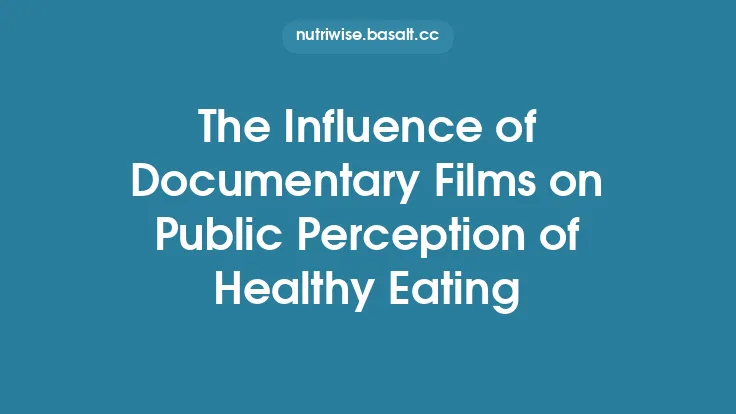The way a news story is packaged can be just as influential as the story itself, especially when it comes to diet research. A single, eye‑catching headline often becomes the primary source of information for busy readers, and the nuances of a peer‑reviewed study are easily lost in the rush to attract clicks. This distortion is not merely a matter of style; it can reshape public understanding of nutrition science, drive consumer behavior, and even influence policy decisions. By examining the mechanisms behind headline construction, the typical shortcuts taken, and the downstream effects on public health, we can better appreciate why a seemingly harmless “breakthrough” headline may actually perpetuate myths and hinder evidence‑based dietary choices.
The Anatomy of a Sensational Headline
- Brevity Over Accuracy
Headlines are limited by space and the need for rapid consumption. To fit within a few words, complex findings are reduced to a single claim, often stripping away essential qualifiers such as “in a specific population,” “under controlled conditions,” or “preliminary.”
- Emotional Triggers
Words like *miracle, danger, secret, or revolution* tap into readers’ hopes and fears. These emotionally charged terms increase click‑through rates but also bias the interpretation of the underlying data.
- Quantitative Overstatement
Percentages and risk ratios are frequently inflated (“30 % reduction in heart disease”) without context about absolute risk, baseline incidence, or confidence intervals. The headline may present a relative risk reduction as if it were an absolute one, dramatically exaggerating the practical significance.
- Attribution to “Experts”
Citing “leading scientists” or “renowned researchers” lends authority, even when the study’s sample size is modest or the methodology is exploratory. This appeal to authority can mask the provisional nature of the findings.
Common Ways Headlines Misrepresent Research
| Misrepresentation | Typical Headline Example | Underlying Reality |
|---|---|---|
| Causation vs. Correlation | “Eating Avocados Prevents Cancer” | Observational study showing an association, not a causal link. |
| Extrapolation from Animal Models | “New Mouse Study Shows Keto Diet Extends Lifespan” | Results limited to rodents; human physiology may differ substantially. |
| Cherry‑Picking Results | “Study Finds No Link Between Sugar and Diabetes” | Only a subset of outcomes reported; other analyses in the same paper show a modest association. |
| Ignoring Sample Size | “Tiny Study Proves Superfood Boosts Metabolism” | Study involved 12 participants; statistical power is insufficient for generalization. |
| Overlooking Confounding Variables | “Coffee Drinkers Live Longer, Says New Research” | Lifestyle factors (exercise, socioeconomic status) not fully controlled. |
Statistical Nuances Lost in Translation
- Relative vs. Absolute Risk
A headline may proclaim a “50 % reduction in heart attacks” when the absolute risk drops from 2 per 1,000 to 1 per 1,000. The relative figure sounds dramatic, but the actual benefit to an individual is modest.
- Confidence Intervals and P‑Values
Scientific papers routinely report a 95 % confidence interval (CI) around an effect size. If the CI includes the null value (e.g., a risk ratio of 1), the result is not statistically significant, yet headlines often ignore this nuance and present the point estimate as definitive.
- Multiple Comparisons
Large dietary studies test many hypotheses (different foods, sub‑populations, biomarkers). Without proper correction, some findings will appear significant by chance alone. Headlines rarely mention the exploratory nature of such analyses.
- Effect Modification
An intervention may benefit only a specific subgroup (e.g., individuals with a particular genotype). Headlines that generalize the result to the entire population mislead readers about the applicability of the finding.
Case Studies of Misleading Diet Headlines
- “Intermittent Fasting Extends Lifespan by 30 %”
*Original Study*: A 12‑week trial in mice showed increased markers of cellular repair.
*Headline Distortion*: The article omitted that the study was short‑term, involved a single strain of mice, and measured surrogate biomarkers rather than actual lifespan. The headline implied a direct, human‑relevant longevity benefit.
- “Low‑Carb Diet Cuts Diabetes Risk in Half”
*Original Study*: A prospective cohort of 5,000 adults found a 15 % relative risk reduction after adjusting for weight loss and physical activity.
*Headline Distortion*: The media report quoted a 50 % reduction, conflating the relative risk reduction with an absolute risk reduction and ignoring the adjustment for confounders.
- “Blueberries Cure Memory Loss”
*Original Study*: A small pilot trial (n = 20) reported modest improvements in a specific memory test after 8 weeks of blueberry supplementation.
*Headline Distortion*: The headline used the absolute term “cure,” disregarding the limited sample, short duration, and the fact that the outcome was a specific cognitive task, not a clinical diagnosis of dementia.
These examples illustrate a pattern: headlines prioritize shock value over fidelity to the data, often leading to public misconceptions that persist long after the original study is re‑evaluated.
Consequences for Public Health and Policy
- Dietary Fads and Market Shifts
When a headline declares a food “miraculous,” consumer demand spikes, prompting manufacturers to market products with exaggerated health claims. This can divert attention from evidence‑based dietary patterns (e.g., balanced Mediterranean diets) toward single‑ingredient trends lacking robust support.
- Misinformed Health Decisions
Individuals may adopt restrictive diets based on a sensational headline, risking nutrient deficiencies or exacerbating existing conditions. For example, a headline touting “zero‑carb diets eliminate heart disease” may lead patients with diabetes to abandon medically advised carbohydrate management.
- Policy Misallocation
Public health agencies sometimes respond to media pressure by allocating resources toward popular but poorly substantiated interventions. This can divert funding from proven programs such as school nutrition standards or community-based physical activity initiatives.
- Erosion of Trust in Science
Repeated exposure to contradictory headlines erodes confidence in scientific expertise. When later studies refute earlier sensational claims, the public may perceive science as fickle, reinforcing skepticism toward future recommendations.
How Scientists and Journals Can Help
- Press Release Precision
Researchers should craft press releases that retain key qualifiers (e.g., “preliminary,” “in mice,” “small sample”) and avoid superlatives. Journals can enforce a checklist ensuring that any press material includes absolute risk figures, confidence intervals, and study limitations.
- Embedding Plain‑Language Summaries
Many journals now provide “lay summaries” alongside the abstract. Expanding these to include a brief “headline‑friendly” sentence that accurately reflects the findings can pre‑empt misinterpretation.
- Open Data and Transparency
Making raw data and analysis scripts publicly available allows journalists and independent analysts to verify claims, reducing the likelihood of overstated conclusions.
- Engagement with Media Training
Institutions can offer media training for scientists, emphasizing how to convey uncertainty and the conditional nature of research without sacrificing clarity.
Tools for Readers to Evaluate Headlines
- Check the Source
Reputable outlets often link directly to the original study or provide a detailed summary. If the article lacks a citation, treat the claim with caution.
- Look for Quantitative Context
Does the headline mention absolute numbers, or only relative percentages? Seek the underlying numbers to gauge real-world impact.
- Identify Qualifiers
Words like “preliminary,” “pilot,” “observational,” or “in animals” are crucial. Their absence may signal oversimplification.
- Cross‑Reference Multiple Outlets
If several independent news sources report the same finding, compare how each frames the result. Consistency across outlets can increase confidence, though it does not guarantee accuracy.
- Consult Expert Summaries
Organizations such as the Academy of Nutrition and Dietetics, Cochrane, or reputable university nutrition departments often publish concise, evidence‑based commentaries on new research.
The Role of Journalists in Accurate Science Communication
- Prioritize Accuracy Over Speed
In the digital age, the pressure to publish quickly can compromise fact‑checking. Journalists should allocate sufficient time to read the full study, not just the abstract, and verify statistical interpretations with a qualified expert.
- Use Balanced Language
Instead of “miracle” or “danger,” opt for descriptors like “potential,” “suggests,” or “requires further investigation.” Balanced phrasing respects the provisional nature of scientific discovery.
- Provide Contextual Comparisons
Situating a new finding within the broader literature helps readers understand whether the result is a breakthrough, a replication, or an outlier.
- Disclose Limitations
A brief bullet list of study limitations (sample size, duration, population specificity) can be included at the end of the article, ensuring readers are aware of the constraints.
- Encourage Critical Thinking
Prompt readers to ask questions: “What was the study design? Who funded the research? How does this fit with existing guidelines?” By fostering inquiry, journalists empower the audience to become discerning consumers of nutrition news.
In sum, while a headline’s primary function is to capture attention, its power to shape dietary perceptions is profound. By dissecting the ways in which headlines can distort scientific findings—through oversimplification, exaggeration, and omission—we uncover a cascade of effects that influence individual choices, market dynamics, and public health policy. Mitigating these distortions requires a collaborative effort: scientists must communicate with clarity, journals should enforce rigorous press standards, journalists need to balance speed with fidelity, and readers must cultivate a habit of critical evaluation. Only through such a multi‑layered approach can the public receive nutrition information that is both engaging and, more importantly, accurate.
